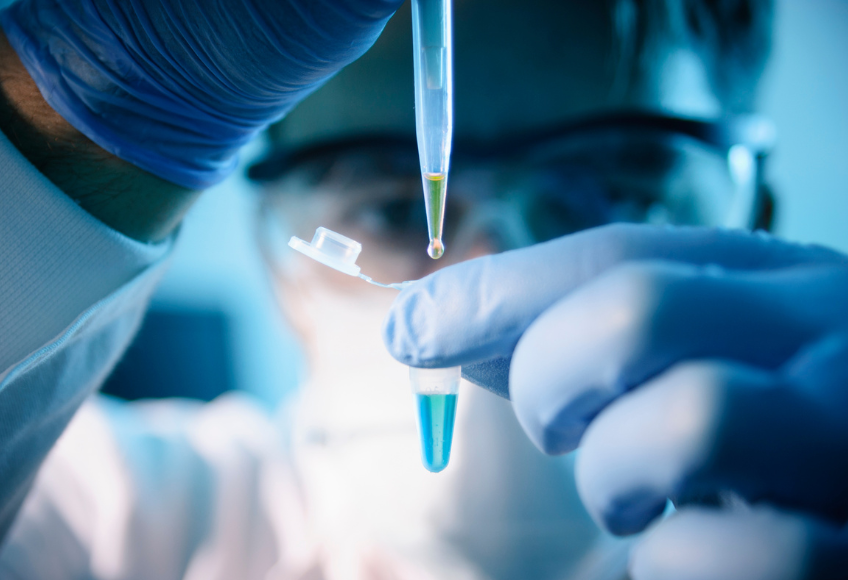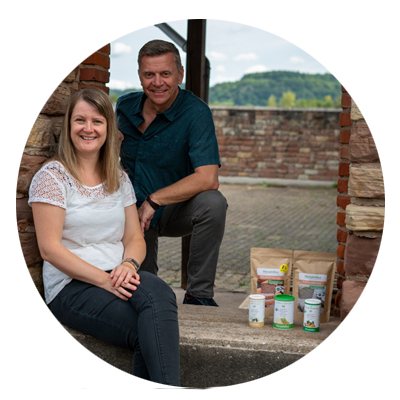
Histamine - how it all started
Sometimes it is the smallest molecules that make the biggest vertebrae - histamine is just one thing. His story does not begin with allergies or intolerances, but with pure curiosity and research spirit in the early 20th century.
In 1907, histamine was first made synthetically - a biogenic amin that initially seemed rather inconspicuous. In 1910, the two British researchers Henry H. Dale and George Barger succeeded in proving histamine for the first time in nature. They found it in the mother grain mushroom, a parasitic mushroom that grows on grain. It was clear that histamine is not only an artificially produced fabric, but actually occurs in nature. In the same year, Dale and his colleague P. P. P. Laidlaw made another groundbreaking discovery: They found that histamine also occurs in the human body naturally - and that it fulfills important functions there. At the same time, the German scientist Dankwart Ackermann managed to clarify Histamine's origin in the body. He showed that histamine was created from the amino acid Histidine - with the help of a special enzyme. It quickly became apparent that histamine fulfills a surprising number of tasks.
Share information about your brand with your Customers. Describe A Product, Make Announcements, Or Welcome Customers to your Store.
Almost three decades later, in 1937, research went a big step further: Daniel Bovet and Anne-Marie Staub discovered the first substances that can block the effect of histamine-the so-called antihistamines. This discovery was the starting signal for the development of medication against allergic reactions. Just a few years later, in the early 1940s, the first antihistamines were used in therapy with phenbenzamine and mepyramin. In the 1950s, research was then carried out - not only in the area of allergies, but also in connection with the nervous system. During this time, antihistamine research even emerged the first neuroleptics medication that are used in mental illnesses such as schizophrenia.
James W. Black made another breakthrough in 1972: He was able to show that there are different types of histamine receptors in the body- namely H1 and H2 receptors. This discovery was crucial for the targeted development of medication, for example in allergies (H1) or stomach problems such as heartburn (H2). And the story continued: in 1983 the French researcher Jean-Michel Arrang discovered the H3 receptor, which plays a role, especially in the brain-for example in sleep, appetite or attention. And in 2000, as part of the deciphering of the human genome, the H4 receptor was also described, which is involved in inflammatory processes.
Share information about your brand with your Customers. Describe A Product, Make Announcements, Or Welcome Customers to your Store.
Image with text
You are what you eat!
Our mission: create delicious foods according to your own recipes - histamine -free, gluten -free and above all full of taste
To the product variety
Histamine intolerance
Histamine is therefore a body -owned messenger that is released if necessary - for example in the event of inflammation, injuries or in response to certain stimuli such as pollen or germs. Sounds pretty useful, right? But as so often in the body: it's about balance. If too much histamine is released or not properly dismantled, an imbalance arises - and this is exactly where the history of histamine intolerance begins. Although the term has only become really popular in recent decades, there have probably been the typical complaints for much longer: reddening of the skin, headache, digestive problems, palpitations - and often it is not immediately clear what is actually behind it.
As early as 1965, the German doctor Prof. Dr. Wilfried Lorenz his doctoral thesis on histamine and the enzyme histidind carboxylase in the central nervous system and in the upper digestive tract - and thus laid the foundation for his later research. In the late 1980s, he carried out an experiment: two groups of pigs were given histamine through a gastric tube. One of the groups had previously received a DAO inhibitor-a substance that blocks the enzyme diamino oxidase, which usually builds histamine in the body. The result was dramatic: all animals in this group got into an anaphylactic shock, three of them did not survive. As a result, Lorenz repeated the experiment - this time he also gave antihistamines before the histamine. The pigs remained largely symptom -free. So it was clear - there is a real mechanism behind it. Lorenz first called the discovered reaction "histaminosis". In retrospect, maybe not the best choice of words, because as we know today, the problem is usually not in an excessive amount of histamine, but in a reduced activity of the degrading enzyme diaminoxidase (DAO). In order to better capture these relationships, the term "histamine intolerance" was finally shaped - a name that has now prevailed worldwide.
Even before Lorenz's animal experiments were intensively researched in Vienna on the subject of histamine. In 1980, Dr. Reinhart Jarisch together with Manfred Götz the Floridsdorfer Allergy Center, where you also specialize in histamine. One of the most important findings of this time was the introduction of antihistaminic pretreatment in the event of allergic vaccinations-a measure that has significantly improved the safety of allergen immunotherapy. Over the years, Prof. Lorenz and Dr. Jarisch together ensured that the then largely unknown topic of histamine intolerance got more attention. What was initially only discussed in specialist circles also found its way into the general public. In Austria, histamine intolerance was very large on the title page of the Austrian Ärztezeitung for the first time in 2005 - a real milestone. And just a year later, the German Medical Leaf also reported on this disease that was not yet known.
Today we know that at least one percent of the population is affected by histamine intolerance in Austria and Germany. Histamine intolerance is not a classic allergy, but an enzyme-hungry weight. Affected people react particularly sensitive to histamine -rich or histamine -free foods - and that can mess everyday life.
What was initially a scientific discovery in the laboratory is now a present topic in medicine and nutrition. The good news: With knowledge, mindfulness and a bit of an experimentation, histamine intolerance can be well under control. And if you know your personal tolerance limit, you can also live a good life with histamine - with a little more sensitivity.
We as Histaminikus want to attract more attention for this disease and support those affected again today - on the day of histamine intolerance. On our blog you can regularly receive extensive information about histamine intolerance. You will also find many delicious products in our shop to make your life and your diet with histamine intolerance more relaxed again.
Share information about your brand with your Customers. Describe A Product, Make Announcements, Or Welcome Customers to your Store.
Share information about your brand with your Customers. Describe A Product, Make Announcements, Or Welcome Customers to your Store.

From those affected for those affected
We are Thomas and Michaela Zinser, founder of Histaminikus.
Because of the own histamine intolerance of Michaela and our son, we founded Histaminikus. The frustration does not find any suitable histamine food has spurred us to develop low -histamine food.
We would like to give you back a piece of quality of life. Feel free to look around with us.
Kind regards
Thomas and Michaela







